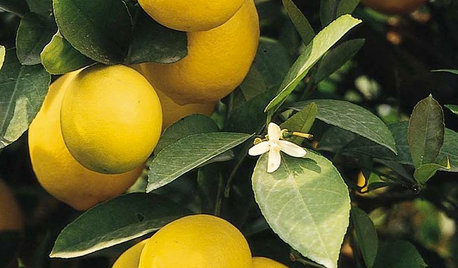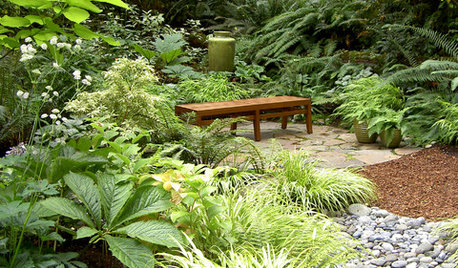Pruning vigorous HTS in soCal
raingreen
9 years ago
Featured Answer
Sort by:Oldest
Comments (60)
Ken (N.E.GA.mts) 7a/b
9 years agojerijen
9 years agoRelated Discussions
How big will Ebb Tide get in SoCal?
Comments (4)I prune mine pretty heavily after a flush, to keep her low. Maybe not a good idea, just, due to some rather arm sized mulch, she got a little dry and lanky looking, tossed some leaves I guess, so, major hair cut! (and I ordered fine bark mulch, four cubic yards, and pieces were the size of my arm...fine, my arse!!)...See MoreSoCal people: How were your roses this year?
Comments (18)Hi Hoovb, I haven't seen anything beneficial. I am probably expecting too much. This is a new rose bed with mostly new roses. The weird, and maybe to be expected thing, is that my 7 year old roses that were transplanted along with the new roses look great. I have 8 Jean Giono roses, three of which have lived here with me for years. They are pristine. No mildew etc. The new five gallon J. Gionos are covered with mildew. They are planted right next to each other. I have never, ever had mildew on J.G. I suppose it is a small root system vs. a large one. Mine have been in 15 gallon containers. What, if anything, would you do? I have been tempted to cut all the leaves off. Today we are under a Marine layer, and I expect it for most of June. So, mildew is going to be a problem. Also, what nurseries do you S. Cal people go to? I drive up and down S. Cal to visit family and would love to visit good nurseries. (with lots of roses) Thanks for the help, Eileen/tinyrose...See MoreOld Rose Forum Friend: New to SoCal Beach City. Help me choose!
Comments (32)Hi Beth - I'm new to this forum, but not new to coastal Southern Cal rose growing, so I'll chime in too. I'm in San Juan Capistrano on the South end of Orange County and about 2.5 miles from the beach in a coastal canyon. So I know all about roses in the marine layer fog. Mildew, not black spot, is the bane of our existence here. The only blackspot I've ever seen in my garden was on florist roses. But I do spray. And the three most fragrant ones on your list -- Double Delight, McCartney Rose and Fragrant Cloud -- will mildew even with religious spraying. But, the fragrance is worth it and I grow all three. No one has told you about the rose societies here yet. There are several. I go all the way south to the California Coastal Rose Society in Carlsbad. That's probably too far for you. There are two other OC rose societies -- the Orange County Rose Society which meets very near to Huntington Beach in Westminster -- they focus on exhibitions and hold their show the last weekend of October every year at Rogers Gardens. There's also another one that focuses mostly on gardening, garden tours and garden parties -- no exhibiting -- which is the Saddleback Rose Society -- that one's a bit inland for both of us. Wholly different climate those folks have. You can get to either one by googling the names, or I've put a link in here for the OCRS. On the rest of your list, I've grown most of them, and they do just fine. But as a general rule, in coastal cool areas like ours, fewer petals is better. Many roses just won't open like they do in hot climes, and sometimes you just die waiting for a leeeetle bit of heat to get them open, which never comes. So, plan to have some that open without heat. As for colors, try these -- Pink -- Our Lady Of Guadalupe is by far the best pink floribunda. But also check out The Imposter and Lovestruck, both of which do well for me. For Hybrid Teas, I like Memorial Day. Purple -- Intrigue is okay, but try Purple Tiger -- it's better and it's striped. It does really well on the coast. For a Hybrid Tea, I like Neptune and one that Armstrongs carries called Della Reese that is a darker purple hybrid tea with occasional exhibition form. Orange -- About Face Red -- I'm still looking for a good one. Yellow -- Julia Child or Midas Touch. Or even Peace, which gets enormous blooms on the coast. Multi -- get some stripes -- City of Carlsbad if you can find it or Cabana if you can't. Have fun. I seem to move every few years just BECAUSE I get to replenish my garden. Enjoy it. Kathy Here is a link that might be useful: Orange County Rose Society...See MoreShovel Pruning vigorous roses?
Comments (9)If you have an out of the way place they won't bother you, you could move them there. If the own-root roses have gotten established, they can be a horrific task to remove. Don't replant soon so you have a chance to clear out *all* the suckers first. This can take a while, but if you don't, they can come back and take over from a new rose trying to get established, and you may not be able to tell the difference. While some of the albas are great shrubs, some of them blackspot as badly as any HT out there....See Morececily
9 years agoTessiess, SoCal Inland, 9b, 1272' elev
9 years agohugogurll
9 years agoraingreen
9 years agojerijen
9 years agoKippy
9 years agoraingreen
9 years agoraingreen
9 years agojerijen
9 years agomsdorkgirl
9 years agojerijen
9 years agocomtessedelacouche (10b S.Australia: hotdryMedclimate)
9 years agolast modified: 9 years agofduk_gw UK zone 3 (US zone 8)
9 years agojerijen
9 years agoKippy
9 years agojerijen
9 years agoKippy
9 years agoraingreen
9 years agocomtessedelacouche (10b S.Australia: hotdryMedclimate)
9 years agolast modified: 9 years agoKen (N.E.GA.mts) 7a/b
9 years agoraingreen
9 years agojerijen
9 years agoBuford_NE_GA_7A
9 years agojerijen
9 years agoraingreen
9 years agojerijen
9 years agokittymoonbeam
9 years agoraingreen
9 years agojerijen
9 years agoBuford_NE_GA_7A
9 years agoraingreen
9 years agoraingreen
9 years agoTessiess, SoCal Inland, 9b, 1272' elev
9 years agofduk_gw UK zone 3 (US zone 8)
9 years agoraingreen
9 years agoraingreen
9 years agoKippy
9 years agolast modified: 9 years agojerijen
9 years agoJasminerose, California, USDA 9b/Sunset 18
9 years agoraingreen
9 years agoKippy
9 years agoraingreen
9 years agocomtessedelacouche (10b S.Australia: hotdryMedclimate)
9 years agolast modified: 9 years agofduk_gw UK zone 3 (US zone 8)
9 years agoKippy
9 years agoraingreen
9 years ago
Related Stories

GARDENING GUIDESWhat Kind of Roses Should You Grow?
Want to add the beauty of roses to your garden? Find out which ones, from old-fashioned to modern, are right for you
Full Story
CALIFORNIA GARDENINGCalifornia Gardener's February Checklist
Celebrate 5 California classics: plants that defy winter with bright flowers, luscious fragrance and, for some, delicious taste
Full Story
GARDENING GUIDESGreat Garden Combo: 6 Beautiful Plants for a Shady, Wet Site
Transform a shade garden with moisture-loving golden grasses, textural leaves and a sprinkling of flowers
Full Story
FALL GARDENING7 Reasons Not to Clean Up Your Fall Garden
Before you pluck and rake, consider wildlife, the health of your plants and your own right to relax
Full Story







cecily